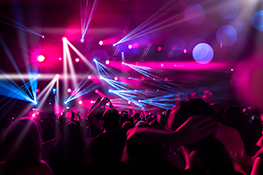Basic Stage Lighting Setup for Theatre Performances
A well-designed stage lighting setup is crucial for any theatre performance. It can enhance the visual impact of the play, create mood and atmosphere, and even guide the audience’s attention. Whether you’re a seasoned professional or just starting out, understanding the basics of stage lighting is essential. This article will guide you through the essential elements of a basic stage lighting setup, providing insights and tips for effective illumination.
Types of Stage Lights
There are several types of stage lights commonly used for theatre performances, each serving a distinct purpose. Let’s explore some key types:
1. Fresnel
Fresnel spotlights are known for their soft, focused beam and are ideal for highlighting actors and creating dramatic effects. They feature a lens with concentric rings that produce a smooth, even light spread.
2. PAR Can
PAR Cans are versatile lights that offer a wide beam angle, making them suitable for washes and backlighting. They are often used to create general illumination across the stage.
3. LED Stage Lights
LED stage lights have gained immense popularity due to their energy efficiency, long lifespan, and vibrant color options. They are available in various styles, including spotlights, floodlights, and wash lights, providing flexibility for various lighting designs.
4. Ellipsoidal Reflector Spotlight (ERS)
ERS lights are powerful spotlights that offer a highly focused beam, ideal for highlighting specific areas or creating dramatic accents. They are often used for projection and gobo effects.
Essential Stage Lighting Equipment
In addition to the stage lights themselves, several other equipment components are essential for a comprehensive setup:
1. Lighting Control Console
A lighting control console is the brain of your lighting system, allowing you to control the intensity, color, and timing of your lights. It’s the command center for creating dynamic lighting effects.
2. Dimmers
Dimmers regulate the intensity of the lights, enabling you to create subtle transitions and dynamic effects. They are typically integrated into the lighting control console.
3. Cables and Connectors
High-quality cables and connectors ensure reliable power transmission and signal flow throughout your lighting system. Choose cables appropriate for the wattage and voltage of your lights.
4. Lighting Stands and Truss
Stands and truss systems provide secure mounting points for your stage lights, allowing for flexibility and stability in your lighting setup.
Setting Up a Basic Stage Lighting System
Here’s a step-by-step guide to setting up a basic stage lighting system:
1. Plan Your Lighting Design
Before setting up your lights, consider the specific needs of your production. Identify the key areas you need to illuminate, the desired mood and atmosphere, and any special effects you want to create.
2. Choose Your Lights
Select lights that match your lighting plan, ensuring they have the appropriate wattage, beam angle, and color options for your needs.
3. Mount Your Lights
Mount your lights securely using stands or truss, adjusting the height and angle of each light to achieve the desired illumination.
4. Connect Your Lights to the Control Console
Connect your lights to the control console using cables and connectors, ensuring all connections are secure and properly grounded.
5. Program Your Lighting Effects
Use the lighting control console to program your lighting cues, including intensity, color, and timing. This allows for smooth transitions and dynamic effects throughout your performance.
Tips for Effective Stage Lighting
Here are some essential tips for optimizing your stage lighting:
1. Focus on the Actors
Ensure that the actors are well-lit and visible to the audience. Use spotlights to highlight individual actors and create a sense of depth and dimension.
2. Create Mood and Atmosphere
Use color and light intensity to create the desired mood and atmosphere for your performance. Warm colors can evoke intimacy and warmth, while cool colors can create a sense of distance or tension.
3. Use Lighting to Guide Attention
Strategic use of lighting can direct the audience’s attention to specific areas of the stage. Use spotlights to highlight key moments and transitions.
4. Don’t Overdo It
Avoid using too many lights, especially if they are overly bright. This can create a distracting glare and overwhelm the audience.
5. Practice and Refine
Experiment with different lighting setups and effects during rehearsals to find what works best for your production.
Get Started with Stage Lights Today
Investing in a quality stage lighting setup is a wise decision for any theatre production. It can elevate your performances, create a captivating visual experience, and enhance the overall storytelling. Contact Stage Lights today to explore our range of lighting equipment and receive expert advice on creating the perfect lighting setup for your needs.
Contact us today!
Phone: 1800 200 6000, +91 90150 60000
Email: info@stagelights.in


 Auditorium Construction Services
Auditorium Construction Services 